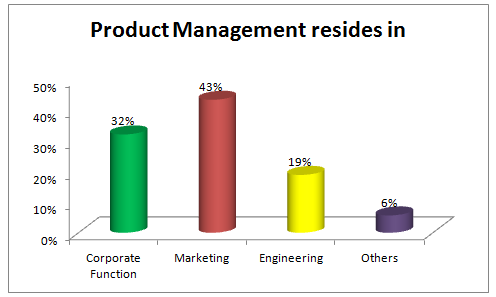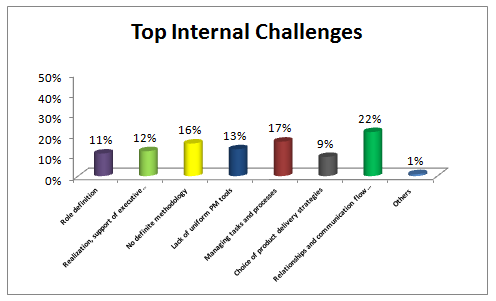With rising interest in product management in India, and a growing awareness of the value of the discipline, we decided to conduct a study on the state of product management in India: what activities are product managers involved with, what their biggest challenges are, and how they are equipping themselves on the road to product success.
The survey was administered online using a structured questionnaire, and we received responses from 100 practicing product managers (PMs) across companies of different sizes, all of whom had attended a training workshop delivered by Confianzys. ?A small number of in-depth interviews were also conducted with product managers (who had not attended a Confianzys training workshop.)
Here are some of the key inputs and insights from the Confianzys State of Product Management in India, 2012.
What is Product Management?
Currently, the four key deliverables owned by the PM function were business case, market requirements document (MRD), market plan and product roadmap. This is good news because it indicates that product managers in India are beginning to spend adequate time on defining the right problem, rather than rushing towards solutions for the wrong ones.
In the majority of cases (68%), product management resides in the marketing (43%) or engineering (19%) or other functions when it should be a corporate function (only 32%).

Clearly, even companies that have created a space for product management are yet to internalize the benefits of giving it a key role in the organization.
What challenges do PMs face?
A large number of product managers (45%) felt that their recently launched product could have been more successful in the market. ?It is worthwhile looking at this figure in the context of the challenges that PMs felt applied to them.
The key internal challenges faced can be divided into 2 kinds ?
(a) 45% of PMs agreed to role definition and role implementation related challenges (poorly defined, poorly supported by executive management, poor quality of internal interactions)
(b) 55% of PMs agreed to knowledge related challenges (lack of tools, process, strategy and methodology)

Another issue that emerged was that 75% of the PMs did not use any scientific pricing methodology.
Overcoming challenges in product management
Almost 45% of respondents felt that market driven methodology, tools and structured PM processes helped them in overcoming the challenges. Another 21% opted for better skills.
These indicate the need for of PM training in the Indian market. Given that many product managers move into the space from engineering, there is value in learning to become market-centric and approach product management in the right way.
81% of respondents felt that they needed immediate improvements in market opportunity identification, customer needs understanding and process adoption.
From the qualitative data obtained, it also emerges that there is a lack of tools and skills to understand customers, or specific aspects such as customers in a particular geography, changing customer preferences or developing a voice of customer program.
From the Confianzys State of Product Management in India, 2012 study, we can conclude that there is a growing awareness of what a product manager?s role in the organization is. At the same time, this is not yet supported in many companies with a clear mandate from executive management.
Further, there is a clear felt need for skill upgrading in the PM space, with respondents articulating that they need more understanding of the PM process and in the areas of evaluating market opportunities and understanding customer needs in their respective industries.
gregg williams theraflu masters leaderboard frozen four joe avezzano kanye west theraflu joey votto
No comments:
Post a Comment
Note: Only a member of this blog may post a comment.